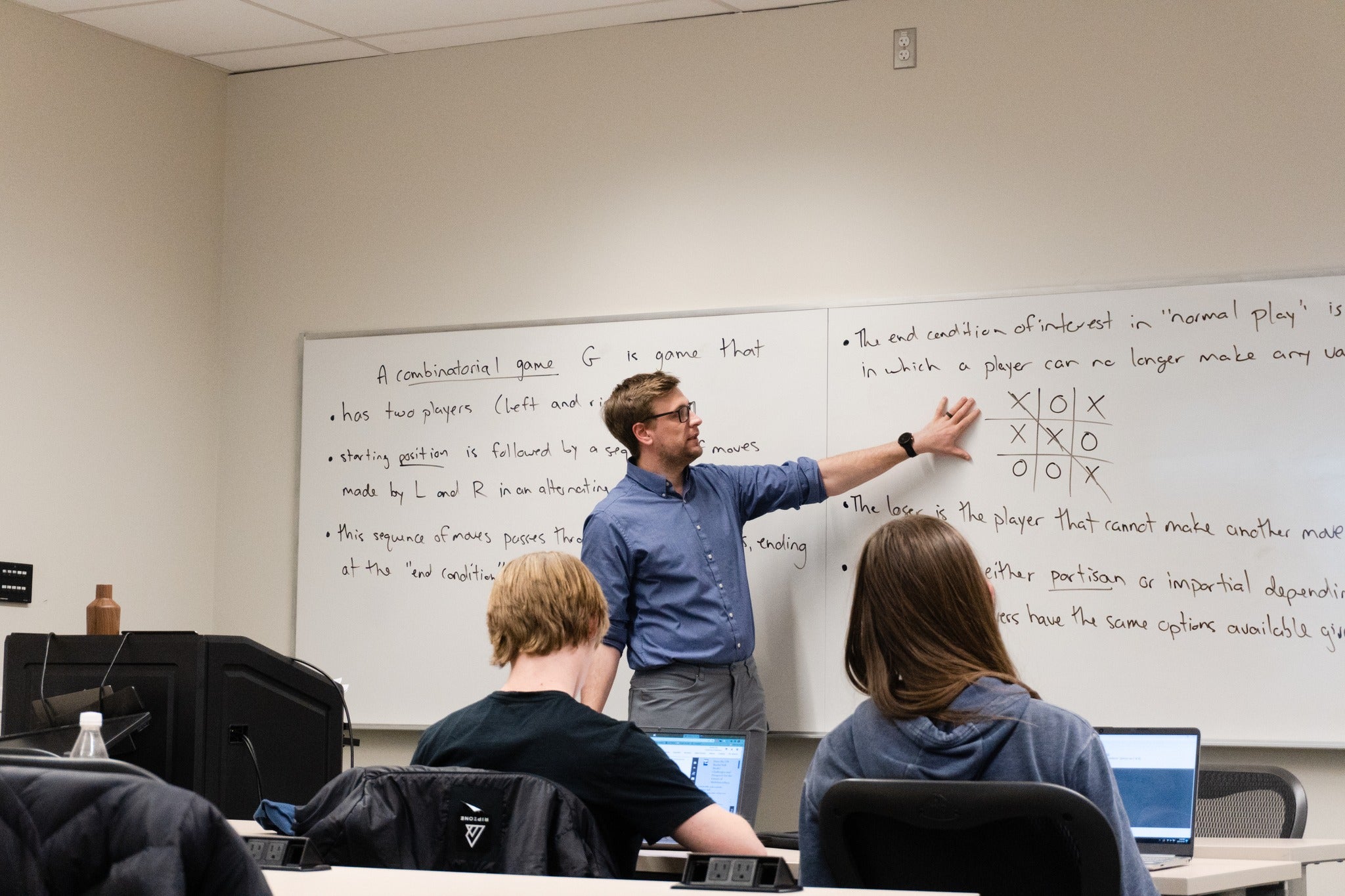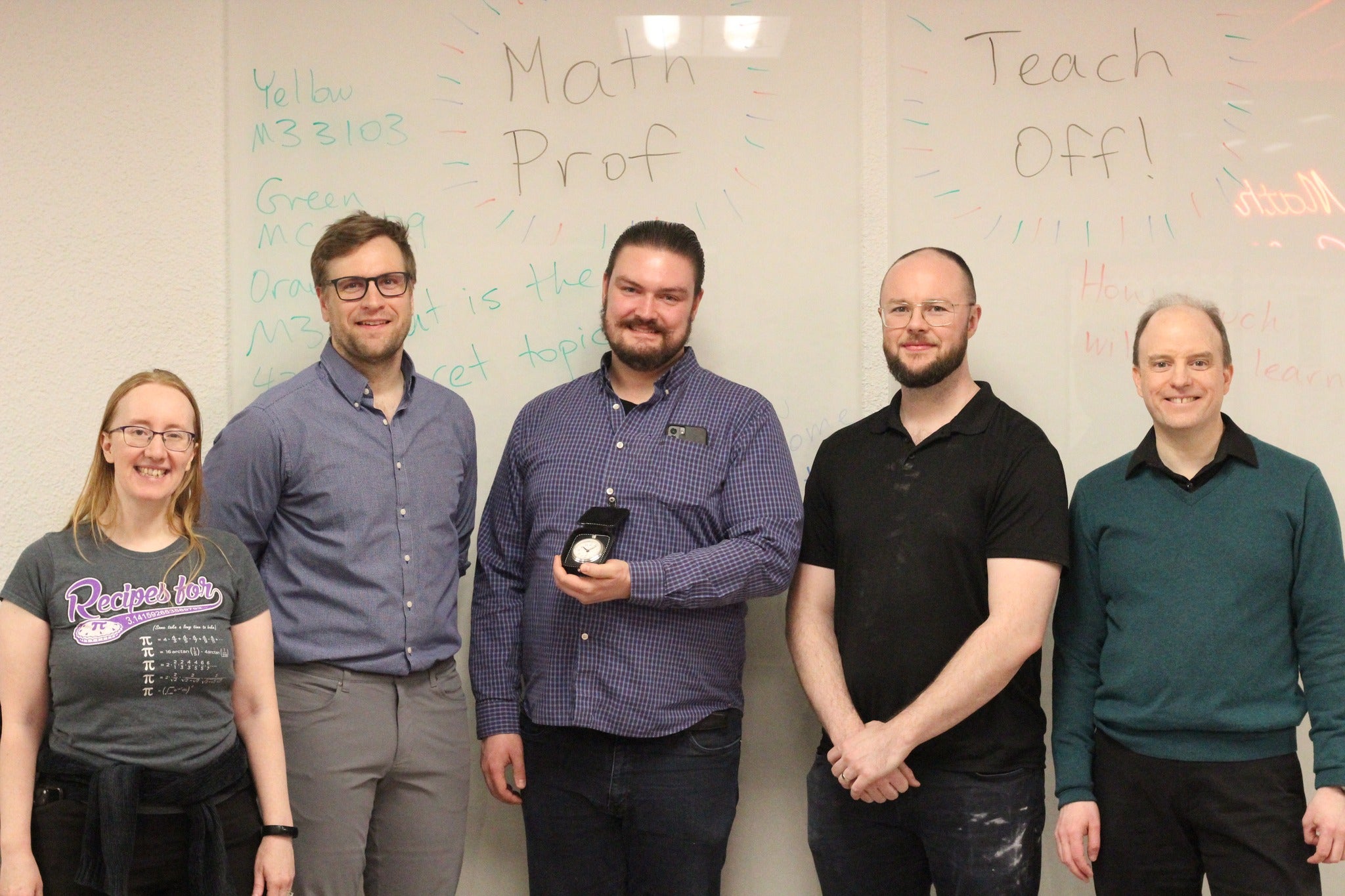
The premise of the event was simple: three groups of students would take a quiz on the mathematical concept. Then, each group would be taught about the concept for an hour by one of three instructors: Nathaniel Stevens (assistant professor of Statistics and Actuarial Science and Director of the undergraduate Data Science program); Jordan Hamilton (lecturer in the Math Undergraduate Group); and Blake Madill (lecturer in Pure Mathematics). Finally, the students would take a second quiz on the concept, and each group’s scores would be compared for improvement and overall accuracy.
David McKinnon, chair of the Department of Pure Mathematics, first came up with the idea for the event in 2021. This kind of iterative testing to assess learning, he says, “is the gold standard in educational research for measuring teaching.” In creating the Teach-Off, he hoped to simultaneously demonstrate the possibilities of this form of learning assessment, while also creating a fun event.
Implementing the Teach-Off, however, took a lot of work, and included some unexpected challenges. The most difficult, McKinnon explains, was finding the right math concept to focus on: he needed something that wouldn’t be too familiar and easy, nor too difficult. He and Diana Skrzydlo, a continuing lecturer in Statistics and Actuarial Science and the director of the MActSc program, brainstormed for a while and together they came up with the topic of combinatorial game theory.
Unfortunately, they were almost too successful: none of the three Math faculty who volunteered for the teach-off were familiar with the material!

L-R: Diana Skrzydlo, Nathaniel Stevens, Jordan Hamilton, Blake Madill, David McKinnon
“I was given less than two days to prepare a lecture on material I had never seen before, and my teaching effectiveness was put to the test!” says Madill. Despite the challenge, however, he had a lot of fun. “I think the students really enjoyed seeing their favourite instructors put under some pressure and asked to do something a little silly.”
“The topic we had to teach was very far outside my comfort zone, and it took considerable effort to dust off that part of my brain,” reflects Stevens. “Educationally, though, I think it’s helpful for students to see professors forced outside of their comfort zones; it normalizes the struggle many students face when encountering new material.”
McKinnon and his team worked closely with executives in MathSoc to help recruit undergrad students for the event. Ciaran Neeley, academic vice president of MathSoc, suggested they play up-beat music in the classroom leading up the event – a move that led to many curious students wandering in and signing up spontaneously. Over 50 undergraduate students ended up participating.
“It’s nice that students can have this opportunity to have a lecture with great math professors and get to know a brand new complex Math concept, says Cecilia Wang, a MathSoc VP who helped organize the event.
Ultimately, everyone involved agreed that the event was an absolute success: students’ average scores doubled after only an hour of instruction, instructors got to flex their teaching muscles, and everyone had fun. “I hope that this will grow a conversation about this extremely standard method for measuring teaching,” says McKinnon. He also emphasizes, however, that the event was worth it for the chance to spend low-stakes time playing with math. “It was one of those moments where you realize: I really am working in a building filled with math geeks!”